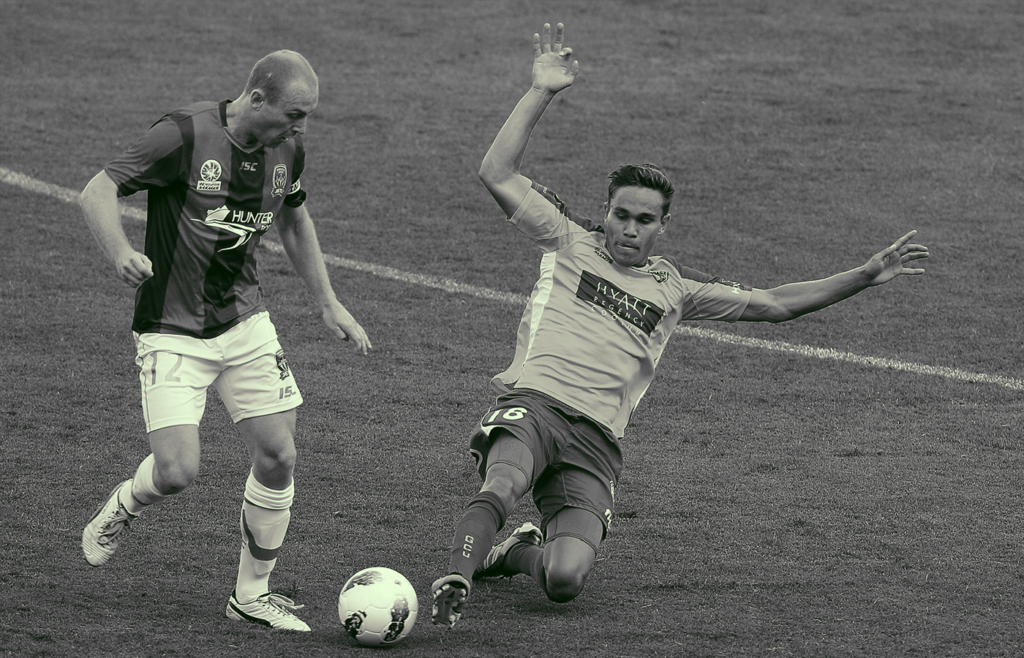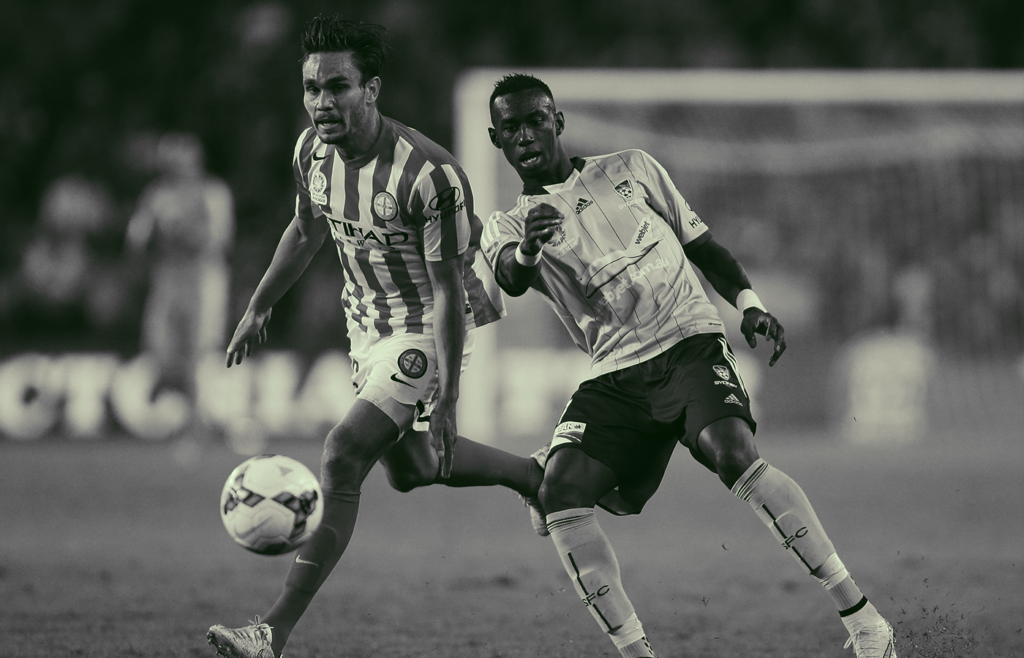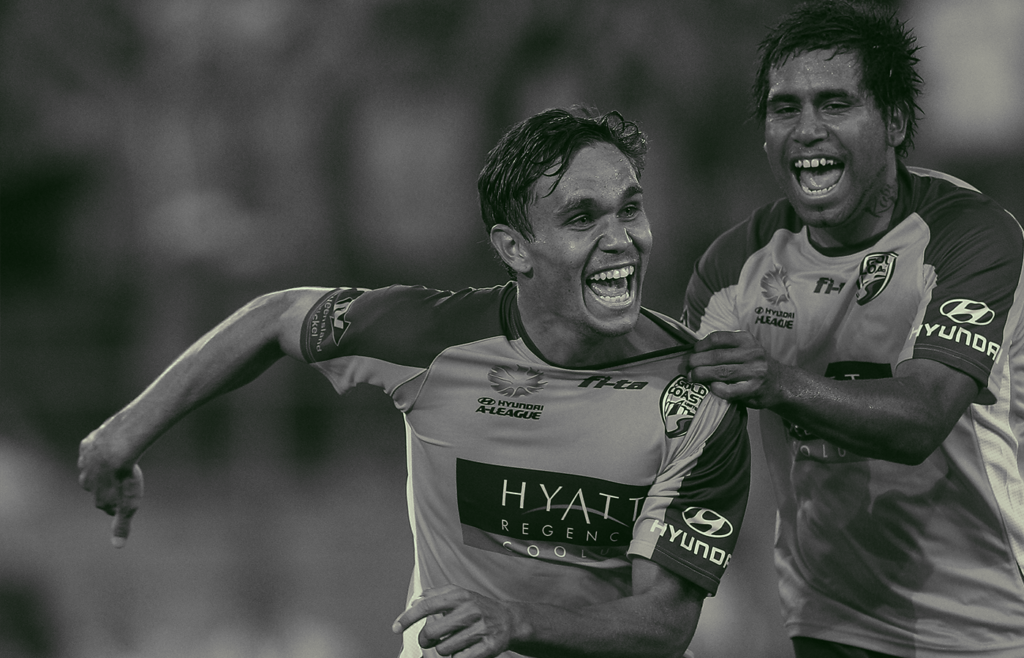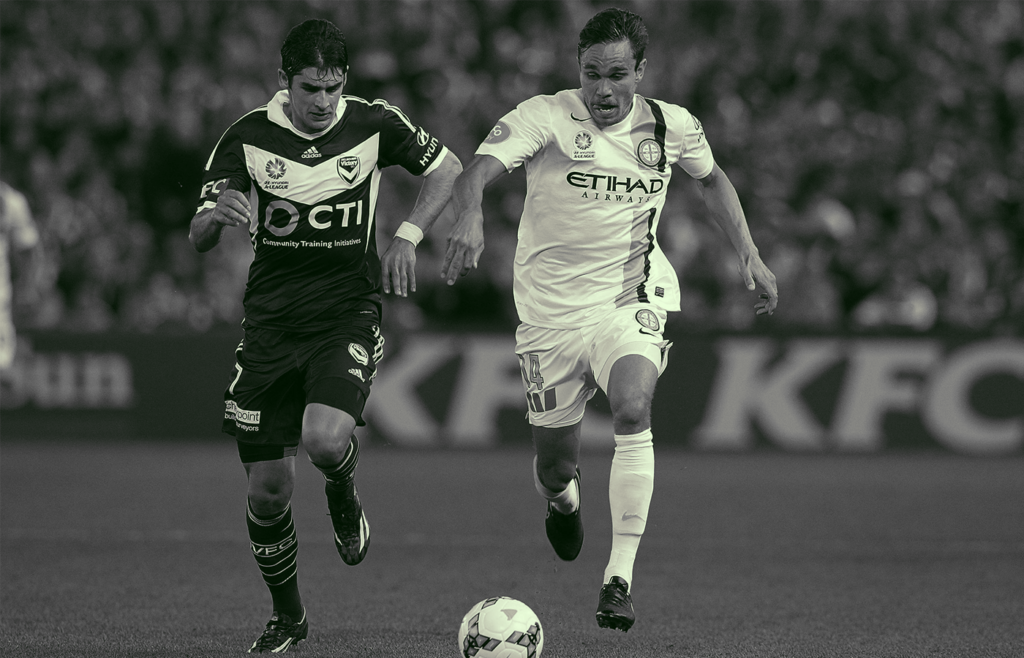
Q: How would you summarise your experience as a young Indigenous footballer entering the sport as a junior?
JB: To be honest, I never really looked at myself as a young Indigenous footballer, I always just saw myself as a young footballer. Entering the sport as a junior, like most other kids, I guess it was a little bit daunting at the start. But once I got playing and I started becoming good friends with my teammates I really enjoyed it.
Looking back, one thing I did lack was having Indigenous players as role models. At the time I wasn’t aware of anybody. Obviously as I got a little bit older, the likes of Jadeo [Jade North] and Doddsy [Travis Dodd] and even Willo [David Williams] started to come on the scene [as role models].

Q: How did you first connect with football and why did you commence playing? What was the major motivation?
JB: I first connected with football via a birthday present [a soccer ball] from the old fella. I also remember on my sixth birthday the old man signed me up to play at my local club. So that was my first sort of connection to football.
My family came from a background of playing all the other different sports and not football. So I was the first one in my family to get involved with soccer and I guess that’s why I commenced playing.
I suppose the major motivation for me, initially, being connected with football was I really enjoyed it growing up. When I started playing professionally, I guess that’s where I started to lose that enjoyment and [playing] was more out of necessity.

Q: What was the specific pathway that you went through to reach the professional level?
JB: I took a pretty traditional sort of pathway. I started off playing just local football down at a local club. As I go a little bit older, I started to try out for representative teams and I was always fortunate enough to be selected in those teams. They were Gold Coast representative teams, then the QAS and the AIS at junior levels before going on to play professionally. So I guess that’s how I became a participant and that’s how I remained a participant in the sport.
PFA: What enabled you to reach the elite level?
JB: I was pretty fortunate to have everything I needed to develop as a player, so for me personally, I was always lucky enough to be selected in those representative teams and to have my family sacrifice for me, whether it was financially or time driving me around to training and games.
I always had everything I needed to develop as a player, but I know not everyone’s like that. There are lots of challenges, particularly within Indigenous communities, when it comes to development and reaching your highest potential, whether it is accessibility or just to the sheer cost of participating in football.

PFA: In your experience, what do you see as the major barriers for Indigenous players to participate in football, particularly in more remote areas?
JB: The major barrier is accessibility. There is not enough done to really engage the Indigenous community, particularly in regional areas, but even in other metropolitan areas, too.
There needs to be more championing of Indigenous players; we have Indigenous players playing overseas at the highest levels – if you look at the likes of Lydia [Williams] and Kyah [Simon] playing at the highest leagues over in Europe. They represent the Matildas and they’ve reached the pinnacle of women’s football and I don’t think we do enough to champion that. I think that’s another barrier which makes it hard; the lack of visible role models that play this sport.
Obviously, the [registration] fees as well. Regardless if you’re Indigenous or not, the fees are way too high to be participating in football in this country.

PFA: What does Australian football need to do to ensure there are better pathways for Indigenous players?
JB: Address what I said previously; make the sport more accessible for the Indigenous community, whether it’s in metro areas or regional areas. We need to champion our players more, particularly Indigenous players, but all players in general, and we need to champion players that have ‘been there, done that’ and have had a lot to share with the younger generations.
We need to address the registration fees and make them cheaper. There needs to be more leadership; it needs to come from the top, because without that, we get a lot of random sports programs and initiatives that kind of pop up with the best interests in mind, but the last thing we need is these programs coming up and then after a couple of years they’re not viable and they’re there one year and then gone the next. We need sustainable programs that are here for the long term.
PFA: Do you think there would be a larger number of Indigenous players competing in the A-League, W-League and playing for our National Teams if there were more defined pathways for Indigenous players?
JB: I think there would be. If you look at other codes, we [Indigenous Australians] make up some pretty healthy [participation] rates in these other codes. So if we’re able to engage more with the Indigenous community in our code through the means that I said previously, I think there would absolutely be more Indigenous players competing in the A-League, in the W-League, for the Socceroos and the Matildas and playing overseas at the highest levels. Absolutely.

PFA: What does Indigenous Football Week mean to you?
JB: For me, it provides an opportunity to celebrate the achievements that Indigenous players have made in the sport, but also initiates conversation about what can be done better and really building on that in a sustainable way. It shouldn’t just happen over Indigenous Football Week, but all year round, in terms of engaging the Indigenous community in football, whether it be players, referees, coaching and within the administration of football as well.








